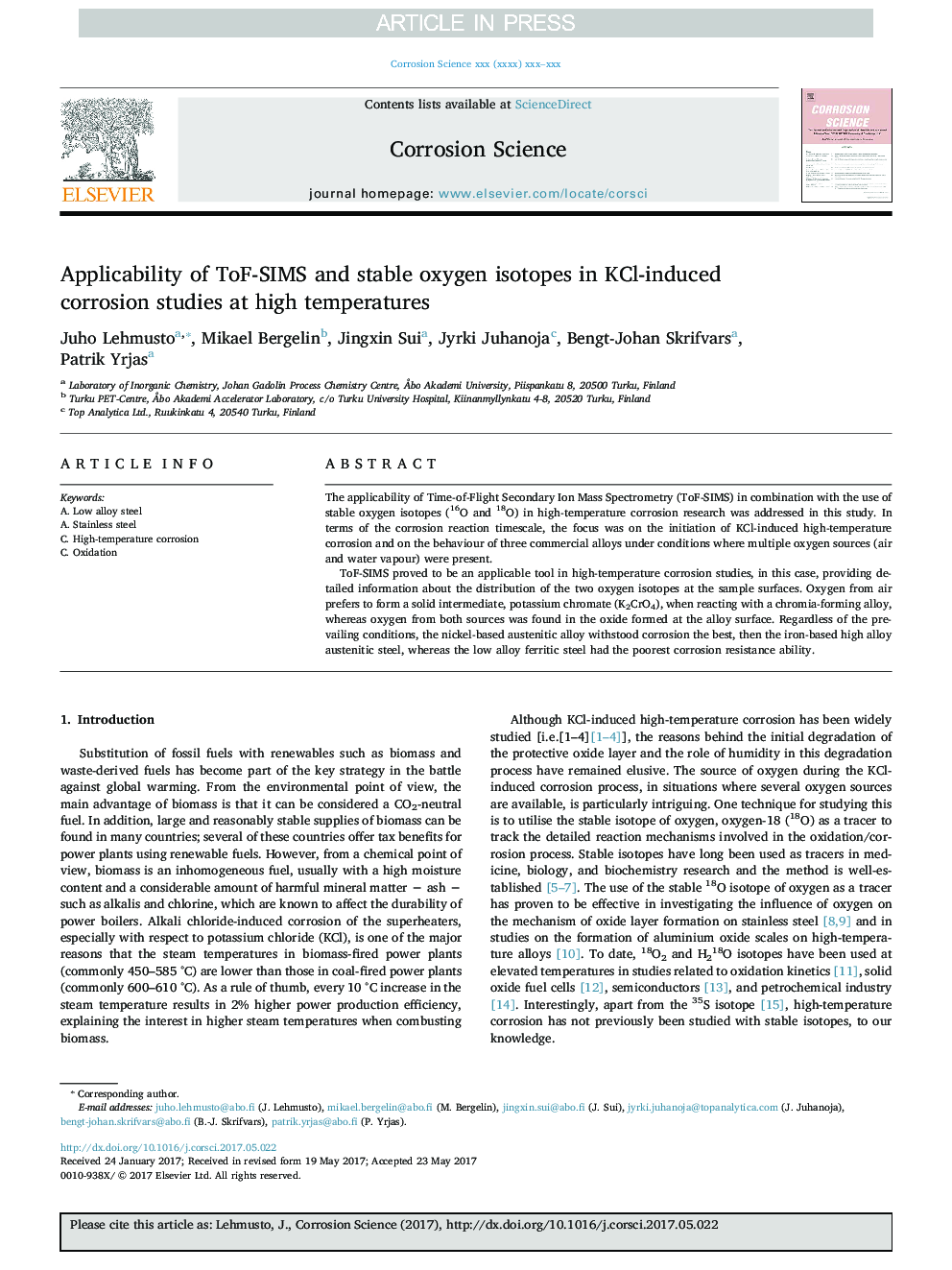| Article ID | Journal | Published Year | Pages | File Type |
|---|---|---|---|---|
| 5439939 | Corrosion Science | 2017 | 11 Pages |
Abstract
ToF-SIMS proved to be an applicable tool in high-temperature corrosion studies, in this case, providing detailed information about the distribution of the two oxygen isotopes at the sample surfaces. Oxygen from air prefers to form a solid intermediate, potassium chromate (K2CrO4), when reacting with a chromia-forming alloy, whereas oxygen from both sources was found in the oxide formed at the alloy surface. Regardless of the prevailing conditions, the nickel-based austenitic alloy withstood corrosion the best, then the iron-based high alloy austenitic steel, whereas the low alloy ferritic steel had the poorest corrosion resistance ability.
Related Topics
Physical Sciences and Engineering
Materials Science
Ceramics and Composites
Authors
Juho Lehmusto, Mikael Bergelin, Jingxin Sui, Jyrki Juhanoja, Bengt-Johan Skrifvars, Patrik Yrjas,
